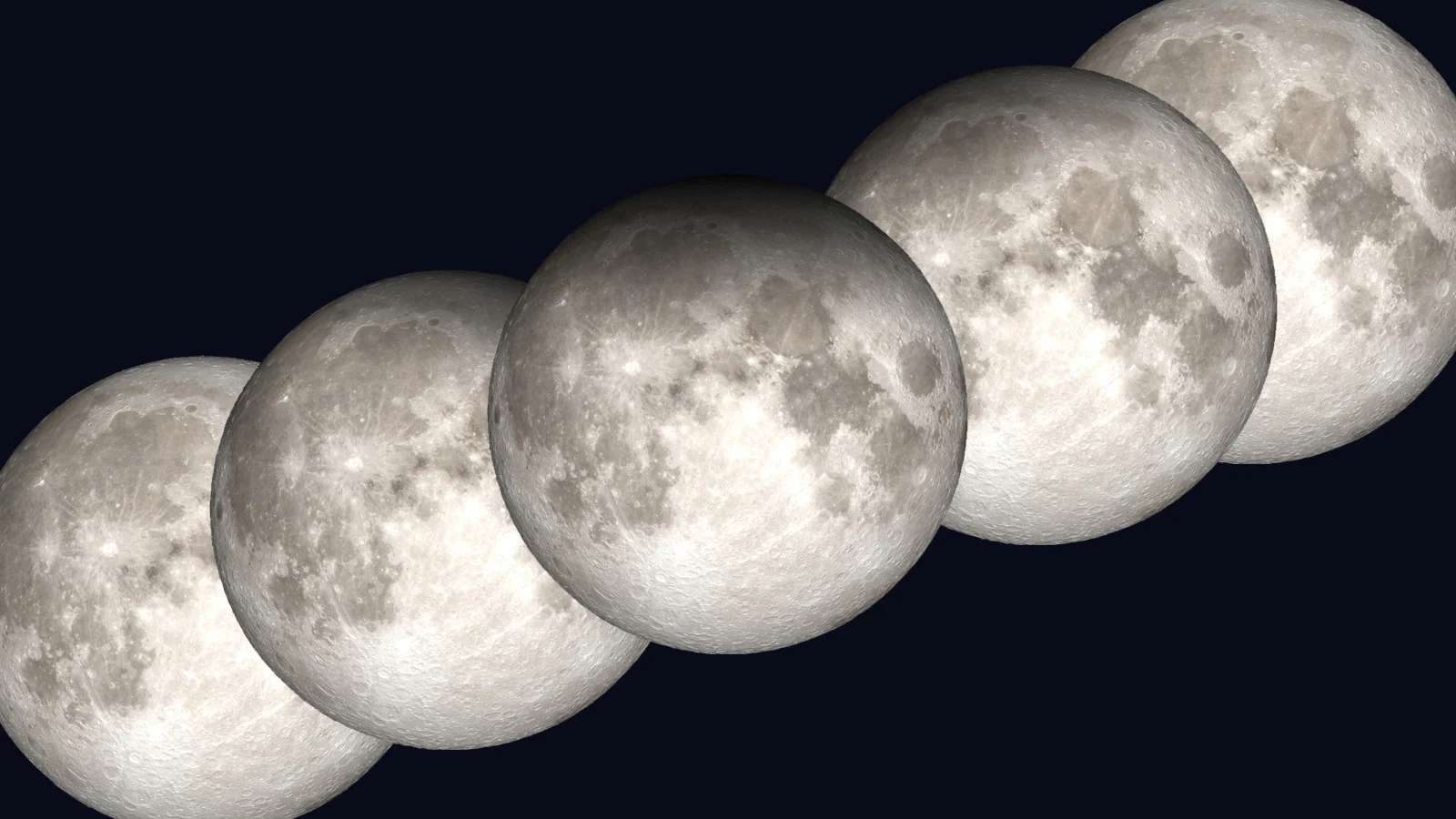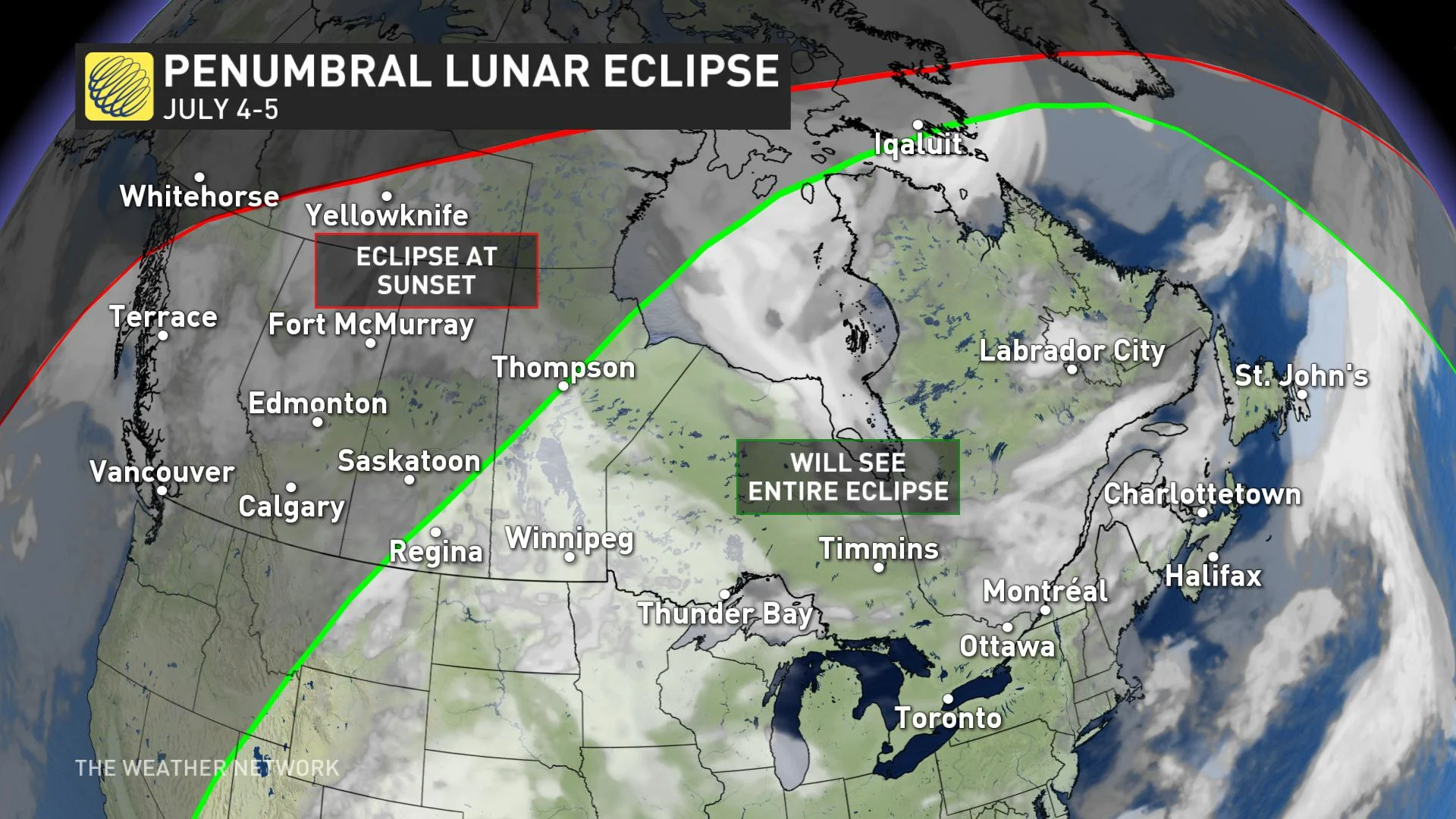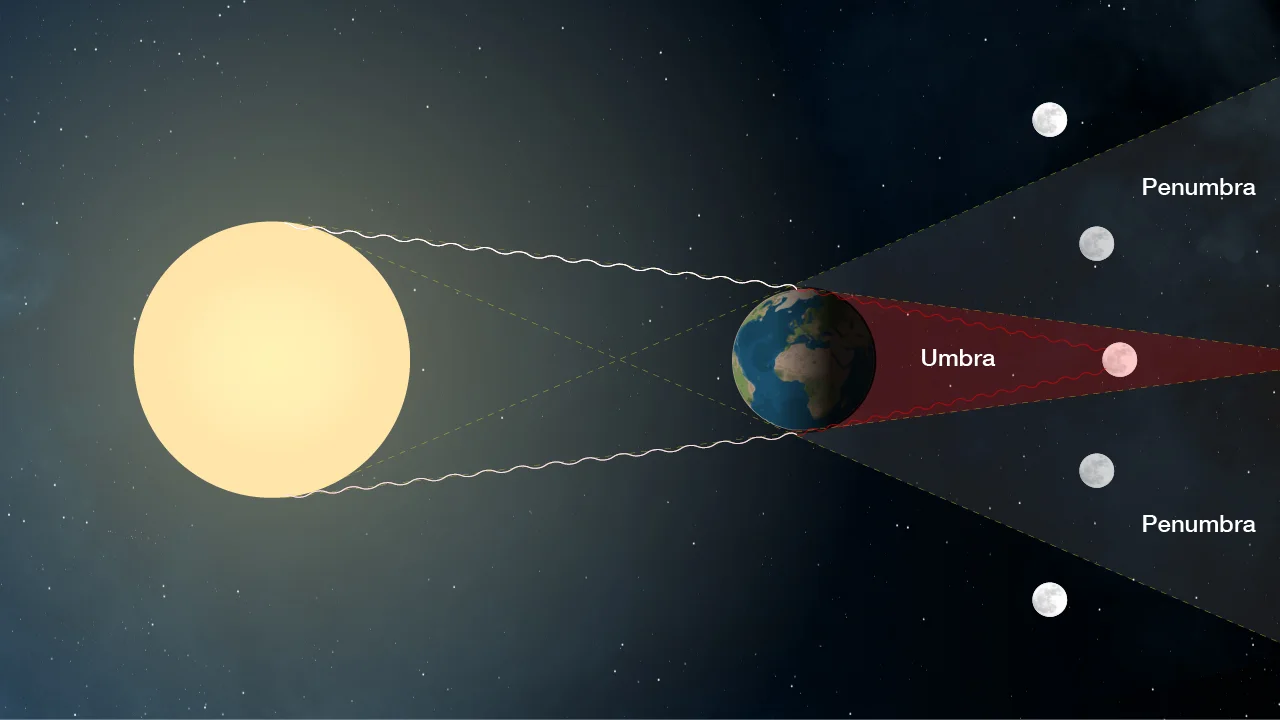
How to watch this weekend's shadowy Penumbral Lunar Eclipse
Time to get out our telescopes and binoculars for a challenging night sky event!
Clear skies Saturday night? Be sure to head outside to catch a lunar eclipse along with two of the solar system's brightest planets.
On the night of July 4-5, 2020, the Full Moon will be hanging out near Jupiter and Saturn from dusk until dawn. If we keep a very close eye on the Moon throughout the night, though, we'll get an extra treat - a penumbral lunar eclipse.

The view of the southern night sky on July 5, 2020, at 12:30 a.m. EST. Credit: Stellarium/Scott Sutherland
The lunar eclipse starts at just after 11 p.m. EST, it reaches its maximum at 12:30 a.m. EST, and it ends just before 2 a.m. EST. Since the eclipse occurs at one specific time for everyone, though, viewers from across Canada will need to adjust that timing to their clocks, as shown in the table below:
NST - Starts 12:37 a.m.; Max at 2:00 a.m.; Ends 3:22 a.m.
AST - Starts 12:07 a.m.; Max at 1:30 a.m.; Ends 2:52 a.m.
EST - Starts 11:07 p.m.; Max at 12:30 a.m.; Ends 1:52 a.m.
CST - Starts 10:07 p.m.; Max at 11:30 p.m.; Ends 12:52 a.m.
MST - Starts 9:07 p.m.; Max at 10:30 p.m.; Ends 11:52 p.m.
PST - Starts 8:07 p.m.; Max at 9:30 p.m.; Ends 10:52 p.m.
For those watching from anywhere west of Regina, Saskatchewan, the timing will put the eclipse during sunset and twilight hours, which will make it especially challenging to see.

Note: This map does not reflect the expected cloud conditions for Saturday night. Check your local forecast to see if you will have clear skies.
This particular lunar eclipse will be something of a challenge for everyone, though, no matter where you are.
A lunar eclipse occurs when the Full Moon passes through Earth's shadow. Due to the tilt of its orbit around Earth, though, the Moon is usually well above or below the shadow when it lines up with Earth and the Sun. During a total lunar eclipse, the Full Moon passes right through the middle of the darkest part of the shadow (the umbra), which turns it a dusky red colour.
If the Full Moon passes through the diffuse outer part of the shadow (the penumbra), though, we see a penumbral lunar eclipse. In this case, the Moon doesn't dramatically change colour. Instead, it dims slightly.

This exaggerated diagram shows how Earth's shadow is split into two parts, the dark umbra and the more diffuse penumbra. Credit: NASA
The difficulty comes not only from how slight the dimming is, but also due to the Moon's apparent size in our sky. Viewers have to rely on their ability to pick out a small difference in brightness of an object that you can completely cover with a dime held at arm's length. For this reason, a penumbral eclipse is best viewed closely through a telescope, a pair of binoculars, or by zooming in with a camera.
In this particular instance, the July 4-5 Full Moon is clipping the southern part of the Earth's penumbra, with about half the Moon's disk being emersed in the shadow. So, during the two hours and 45 minutes of the event, pay close attention to the northern half of the Moon, and especially its north pole, for your best chance to catch the dimming.

If you capture images or video of the eclipse, consider sharing them with us on Twitter, or posting them directly to our UGC gallery via your app or the website, so that everyone can see!
Sources: NASA | RASC | With files from The Weather Network
